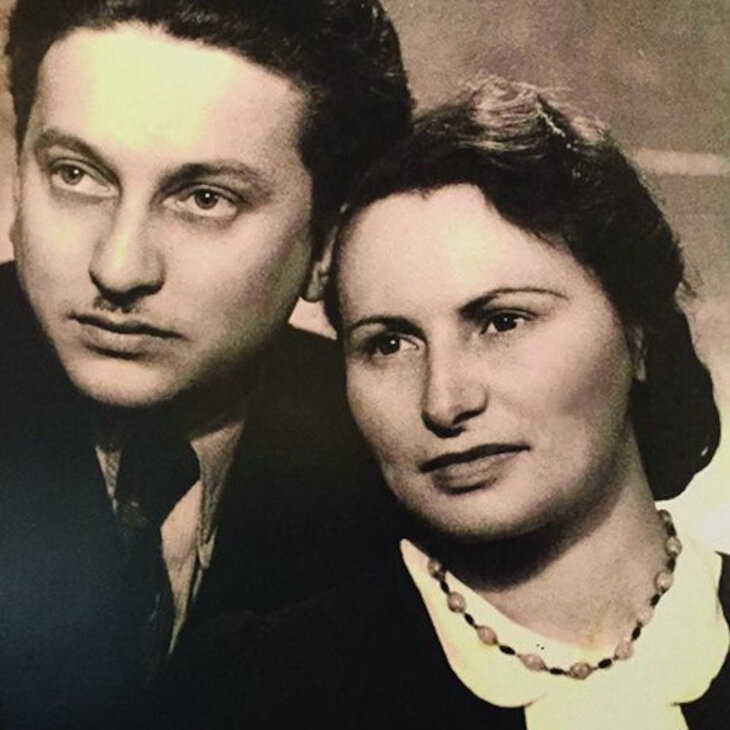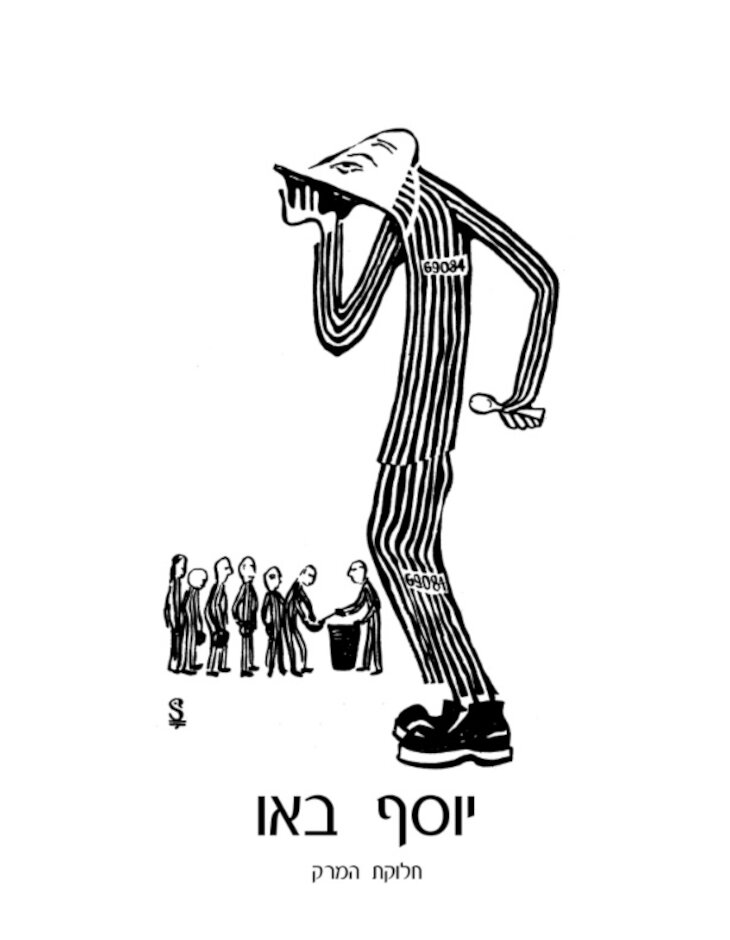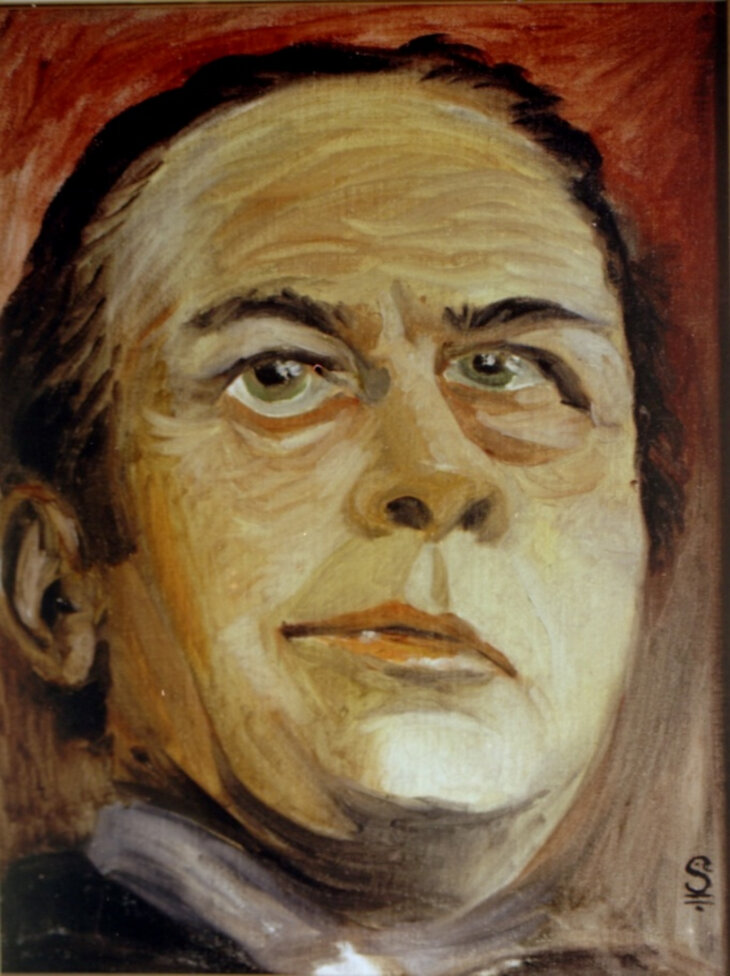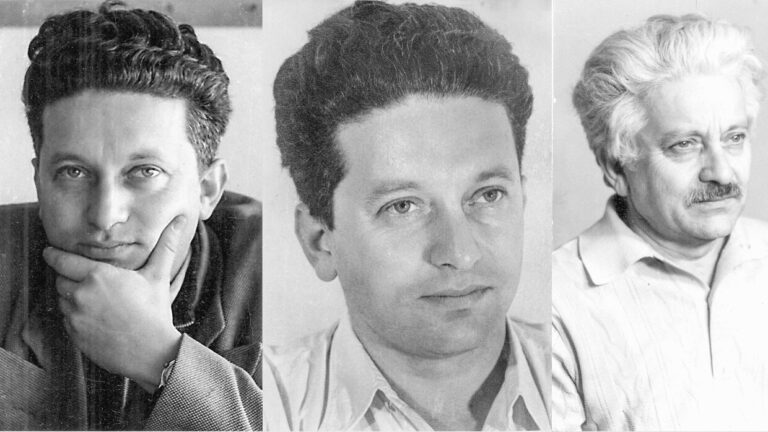Remember the unforgettable moment from Schindler’s List where a couple secretly ties the knot in the midst of a concentration camp? This heart-wrenching scene was inspired by the true story of Joseph Bau and his wife, Rebecca. Joseph, an artist and draftsman, was a master forger of documents and collaborated with Oskar Schindler to save countless Jews from the horrors of the Holocaust. Post-war, Bau went on to become a celebrated artist in both Poland and Israel.
Born in Krakow, Poland, in 1920, Bau pursued his studies at the University of Plastic Arts in the same city. A seemingly inconsequential lesson in German Gothic letters ended up playing a pivotal role in Bau’s survival during the war, despite his initial reluctance towards the German language.
 Joseph and Rebecca Bau
Joseph and Rebecca Bau
When Bau and his family were forced to relocate to the Krakow Ghetto in 1940, he found himself working for the German police, creating Gothic letters for various purposes while also secretly forging documents for the Jewish underground. Unbeknownst to the Nazis, Bau’s covert activities were instrumental in saving many lives.
Subsequently, the family was transferred to the Plaszow concentration camp, where the iconic clandestine wedding ceremony took place beside Bau’s mother’s bunk in 1944. Using his resourcefulness, Bau traded his bread rations for a small silver spoon, which he then fashioned into wedding rings.
Bau dismissed the Hollywood depiction of the wedding scene, highlighting the stark reality of their living conditions in the camp. The actual ceremony was a testament to love and hope amidst unimaginable suffering.
As fate would have it, Rebecca, working as a manicurist for the brutal camp commander Amon Goeth, learned of Schindler’s list and managed to have Joseph’s name included, sacrificing her own spot. This selfless act ultimately saved Joseph’s life.
Following a period of separation, during which Rebecca was sent to Auschwitz and Joseph to Gross-Rosen and later Brünnlitz under Schindler’s protection, the couple miraculously reunited in Czechoslovakia post-liberation. They reaffirmed their commitment to each other in a formal ceremony in Krakow in 1946, despite the profound losses suffered by both in the Holocaust.
 Bau’s Holocaust imagery, eating soup
Bau’s Holocaust imagery, eating soup
Joseph Bau’s artistic talents flourished post-war, earning him recognition as a caricaturist and cartoonist in Poland, where he worked for multiple newspapers. In 1950, he and Rebecca relocated to Israel, where Joseph became a pioneering animator, earning the moniker of the Israeli Walt Disney. He contributed significantly to the Israeli media landscape, creating animated shorts, public service announcements, and title sequences for numerous films.
Unbeknownst to many, Bau also utilized his skills as a graphic artist for the Mossad, forging crucial documents for various missions, including the capture of notorious Nazi war criminal Adolf Eichmann.
Several decades ago, Joseph Bau’s daughters transformed his Tel Aviv art studio into the Joseph Bau House Museum, a tribute to his remarkable life and work. Despite its status as a popular tourist destination, the museum faces financial challenges due to its small size, requiring personal donations to sustain its operations.
Bau’s artwork is showcased in museums and galleries worldwide, including prestigious venues such as the Knesset, the Spanish Parliament, and the United Nations headquarters in New York.
 Bau’s painting of Oskar Schindler
Bau’s painting of Oskar Schindler
Joseph Bau authored several books, including his harrowing memoir of World War II, Dear God, Have You Ever Gone Hungry?, which offers a unique perspective on the Holocaust, blending tragedy with humor. His literary works have been translated into multiple languages, resonating with readers worldwide.
Despite his immense contribution to saving lives during the war, Bau remained modest about his heroic deeds, emphasizing his role in aiding others over his personal safety. This selflessness and unwavering commitment to humanity define Joseph Bau’s legacy as a beacon of hope and resilience.
Regenerate means to restore, renew, or revive something that has been damaged or lost. It can refer to the process of growth and renewal in living organisms, or to the restoration of a physical object or environment. In a broader sense, regeneration can also involve the improvement or revitalization of a system, organization, or community.
Source link

